Welcome to the world of Mexican cuisine, where the incredible birria [beer-EE-uh] taco awaits you! This delectable dish is a testament to the vibrant flavors and rich culinary traditions of Mexico, offering a truly unforgettable dining experience. Our recipe features succulent, slow-cooked beef in a velvety, spiced sauce, garnished with onion and cilantro, all nestled in a crispy, toasted tortilla. The harmony of textures and flavors is what sets this dish apart. So, get ready to appreciate the art of making birria at home and embark on a delicious, culinary adventure!
Why You’ll Love Birria Tacos
- Rich and Flavorful: The combination of slow-cooked, spice-infused meat with toasted, broth-dipped tortillas offers an explosion of flavors in every bite.
- Ideal for Gatherings: The communal nature of assembling and sharing birria tacos makes them perfect for family dinners, parties, or special occasions.
- Leftover Friendly: Not only is it delicious fresh, but the flavors deepen the next day, making leftovers something to look forward to.
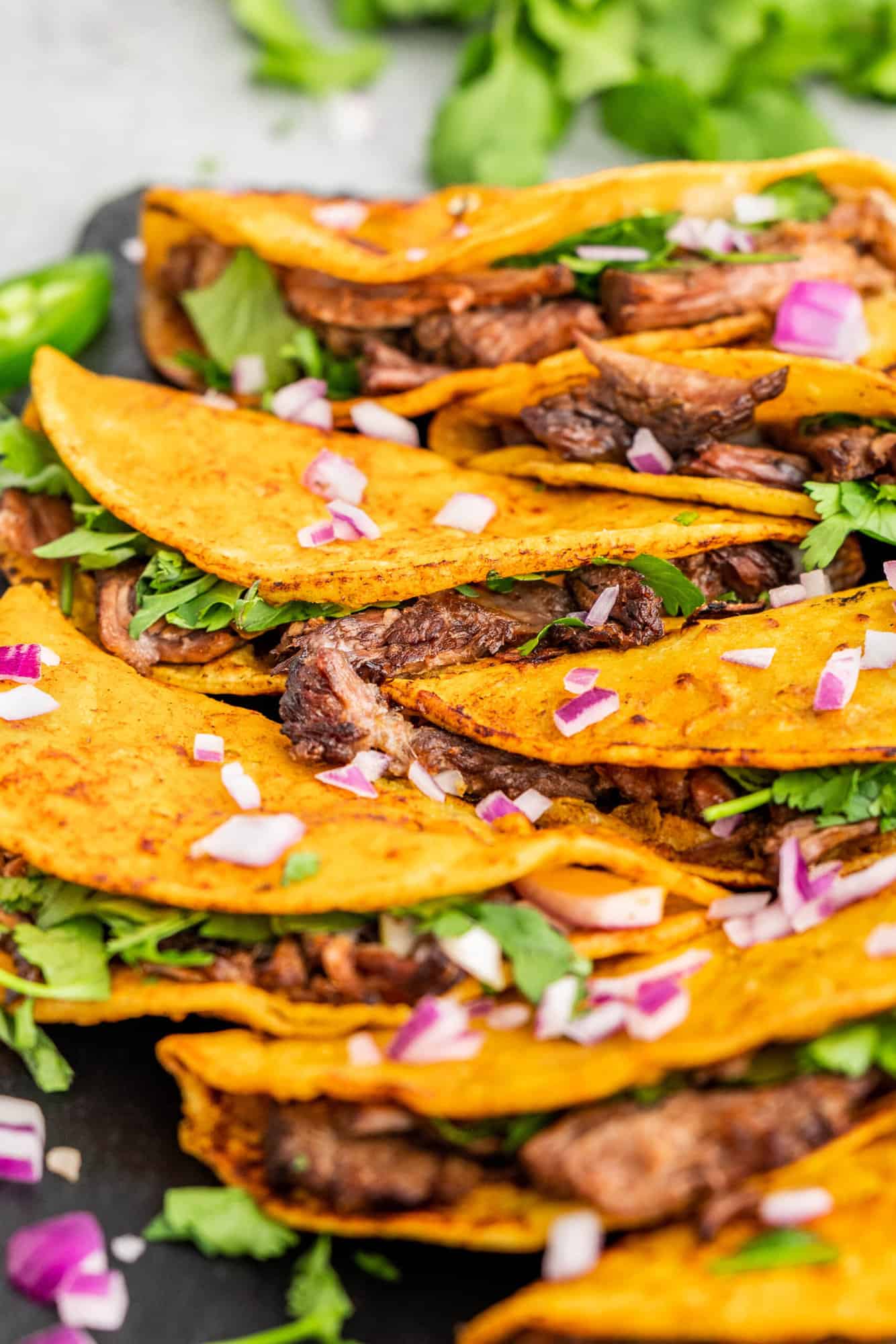
Ingredient Breakdown & Substitutions
Understanding the ingredients in birria tacos is key to capturing their authentic flavor. Here’s a detailed breakdown of the essential components, along with convenient substitutions to help you adapt the recipe based on availability or personal preference.
- Dried Ancho Chiles: Known for their mild heat and sweet, fruity undertones. If ancho chiles are not available, dried pasilla or mulato chiles can be a close substitute, offering a similar mild heat and fruity flavor.
- Dried Guajillo Chiles: These chiles add a tangy and slightly smoky taste to the dish. In their absence, New Mexico chiles are a suitable alternative, providing a similar color and sweetness, though slightly less heat.
- Chipotle Peppers in Adobo Sauce: They impart a smoky heat and are integral to the sauce’s flavor.
- Mexican Oregano: This variety of oregano brings a more earthy and less sweet flavor compared to regular oregano. Mediterranean oregano can be used as a substitute, though it has a slightly different flavor profile.
- Beef Chuck Roast: This cut is ideal for its fat content and tenderness when slow-cooked. For a leaner option, brisket can be used, though it may result in a less tender texture. For a traditional take, goat meat is an excellent choice.
- Corn or Flour Tortillas: Corn tortillas are traditional and offer a distinct flavor and texture. Flour tortillas can be used for a softer and less crumbly alternative if desired.
While substitutes can be used in a pinch and can yield a delicious outcome, it’s important to remember that they will alter the overall character and authenticity of the dish. Each ingredient in birria tacos plays a specific role in creating the unique and rich flavor profile that makes this dish a beloved classic in Mexican cuisine.
Frequently Asked Questions
While birria is traditionally made with goat or beef, you can always substitute with lamb or even chicken if needed, though the cooking time may vary. Keep in mind that using any meat other than goat or beef can change the overall flavor and texture of this dish.
You can use either corn or flour tortillas, depending on your preference. Corn tortillas are traditional, but flour tortillas will work just as well.
Absolutely! Feel free to adjust the number of chipotle peppers to suit your desired spice level.
The traditional Birria tacos and their modern counterpart, quesabirria, share a rich history, but also have some key differences in preparation and ingredients. Birria tacos feature slow-cooked, succulent beef in a velvety, spiced sauce, served in a toasted tortilla with onion and cilantro.
On the other hand, quesabirria emerged from Tijuana as a contemporary twist on the classic birria tacos, adding cheese into the mix. This innovative version incorporates a generous amount of cheese, typically Oaxaca or Monterey Jack, which is melted on the tortilla during the toasting process. The inclusion of cheese not only alters the taste and texture of the taco but also reflects a fusion of traditional Mexican flavors with the modern penchant for cheesy delights.
While both birria tacos and quesabirria share a common foundation of tender, slow-cooked meat in a rich, spiced sauce, it is the addition of cheese that sets the two apart. Quesabirria is a testament to the evolving nature of culinary traditions, as they seamlessly blend old and new, creating a mouthwatering experience that appeals to a broader audience.
While birria tacos and quesabirria share rich flavors and Mexican origins, they differ in a deliciously significant way.
Birria Tacos: These focus on the slow-cooked, spiced meat (beef or goat) nestled in lightly toasted tortillas, often dipped in a flavorful broth. The emphasis is on the savory, juicy meat and the unique taste it gets from the blend of spices and slow cooking.
Quesabirria: This variation adds cheese to the traditional birria taco. Cheese is melted onto the tortillas before they’re filled with the meat, creating a gooey, cheesy layer. This transforms the dish into a hybrid of a taco and a quesadilla, offering an extra layer of flavor and a more indulgent experience.
In essence, while both dishes are rooted in the same culinary tradition, quesabirria brings an additional cheesy twist to the classic birria taco, offering a different texture and an enhanced flavor profile.
The Rich History of Birria
Birria tacos have their roots in the western Mexican state of Jalisco, where birria, a traditional slow-cooked meat stew, has been enjoyed since the 16th century. The origin of birria is entwined with the arrival of Spanish colonizers, who imposed their livestock preferences on the region, such as goats, but dismissed goat meat as undesirable. The colonization of Mexico, which began in the early 16th century, led to a profound transformation of the local cuisine, as European ingredients and cooking techniques were introduced and often forced upon the indigenous population.
Despite the Spaniards’ disdain for goat meat, the indigenous people of Mexico displayed their resilience and culinary creativity by transforming this neglected ingredient into a tender, flavorful stew. Today, birria continues to hold a special place in the hearts and stomachs of people in Jalisco and beyond. It serves as a powerful reminder of the region’s rich culinary history and the ingenuity of its people, who overcame colonial impositions and turned humble ingredients into a beloved and enduring culinary masterpiece.
Troubleshooting
- Meat not tender: Ensure the meat is cooked long enough. Slow cooking is key to achieving the desired tenderness.
- Tortillas breaking: If the tortillas break while folding, they might not be moist enough. Dip them sufficiently in the broth before toasting.
- Lack of flavor: The depth of flavor in birria tacos comes from the blend of spices and slow cooking. If it tastes bland, check if the spices are fresh and adjust seasoning as needed.
Tips From the Chef
- Balance the Heat: Adjust the number of chipotle peppers according to your spice tolerance.
- Cooking Time: Don’t rush the cooking process. The longer the meat stews, the more flavorful it will be.
- Tortilla Toasting: Ensure your skillet is hot enough before toasting the tortillas for a perfect crisp.
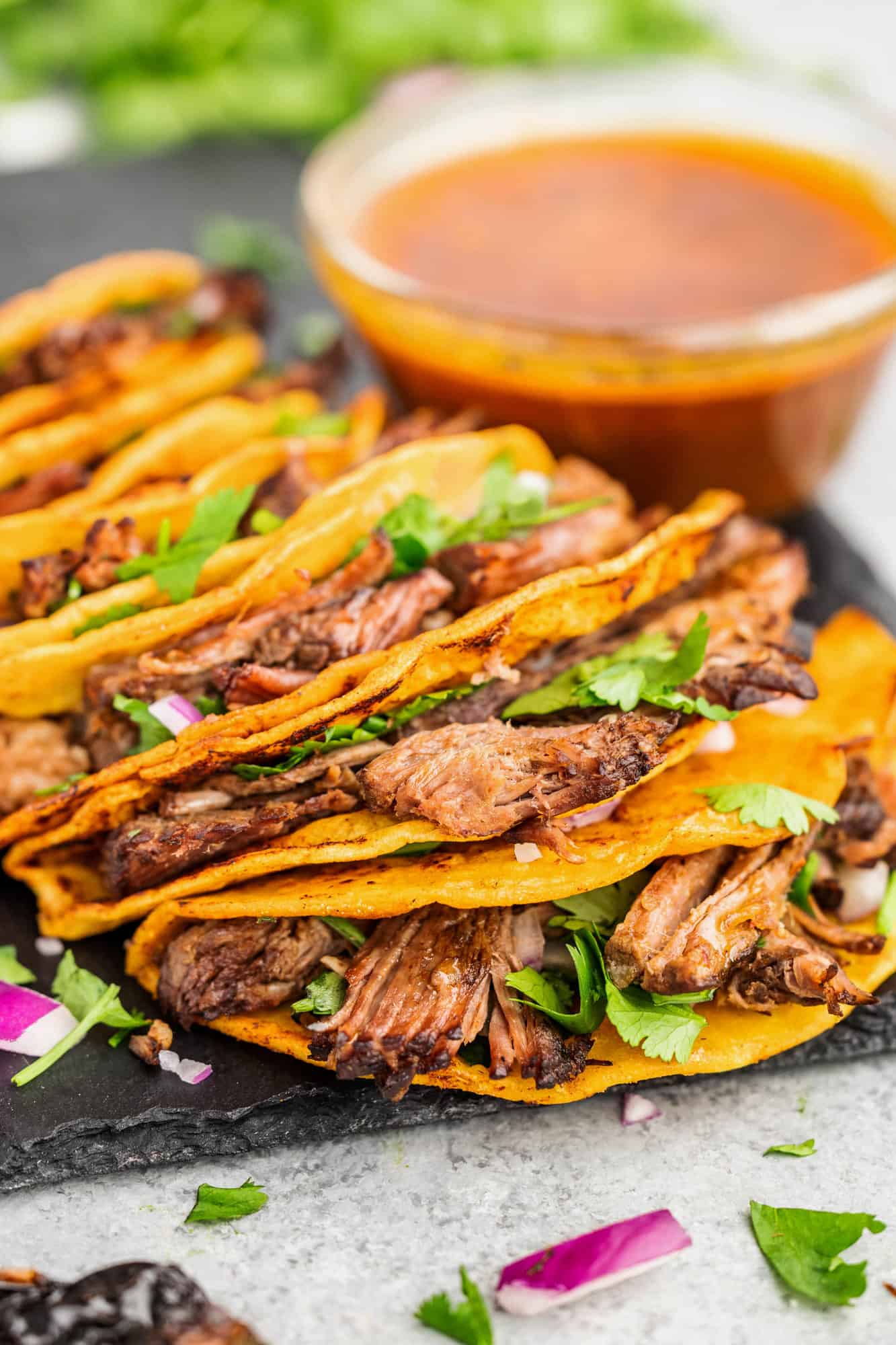
Storage & Reheating Instructions
Store leftover meat, sauce, and assembled tacos separately in airtight containers. Refrigerate for up to 4 days. Reheat the meat and sauce in a saucepan over low heat, or microwave in short intervals, stirring occasionally. Reheat assembled tacos in a dry skillet over low heat until warmed through.
For Authentic Mexican Recipes…
Check out Mexico In My Kitchen! Mely is passionate about sharing traditional Mexican dishes and preserving her country’s rich culinary heritage. Her blog offers an extensive collection of recipes, cooking tips, and cultural insights, making it an excellent starting point for those seeking to dive deeper into the world of Mexican cuisine.
More Favorite Mexican Food Recipes
Watch the video below where Caytlin will walk you through every step of this recipe. Sometimes it helps to have a visual, and we’ve always got you covered with our cooking show. You can find the complete collection of recipes on YouTube, Facebook Watch, or our Facebook Page, or right here on our website with their corresponding recipes.
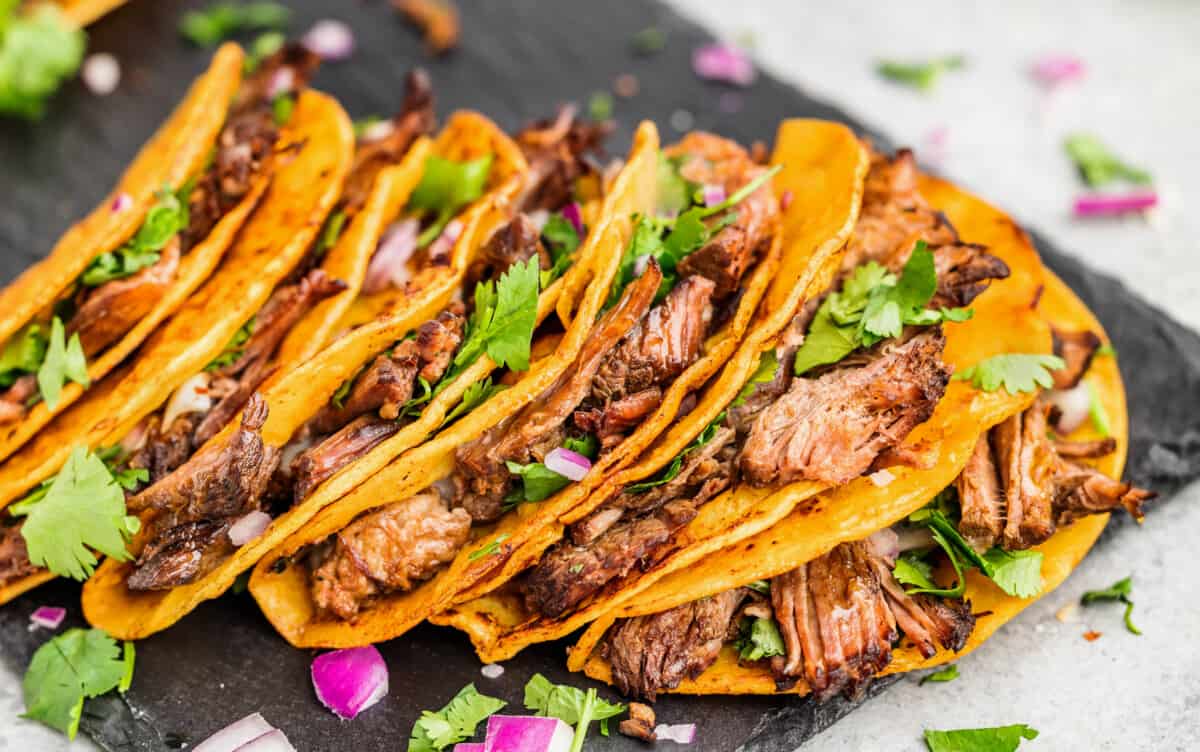
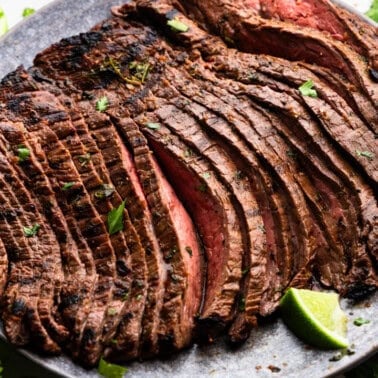
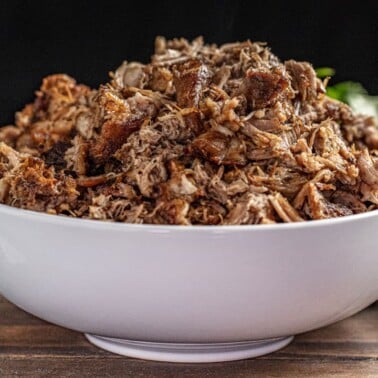
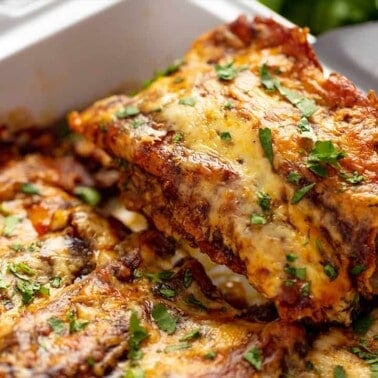
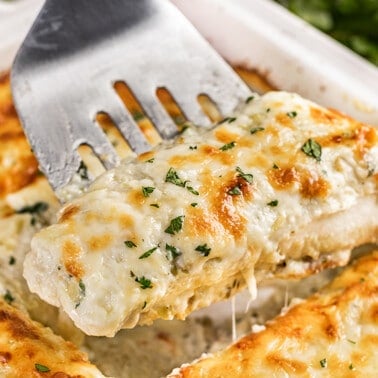
I made this for my family and it was a home run! These tacos are a little time consuming but so worth it. Loads of flavor, just a hint of heat – so good.
We had lots of leftovers and I decided to turn it into soup with more crushed tomatoes, beef stock, and additonal seasonings from this recipe. Another hit.
Thank you for this yummy recipe!!